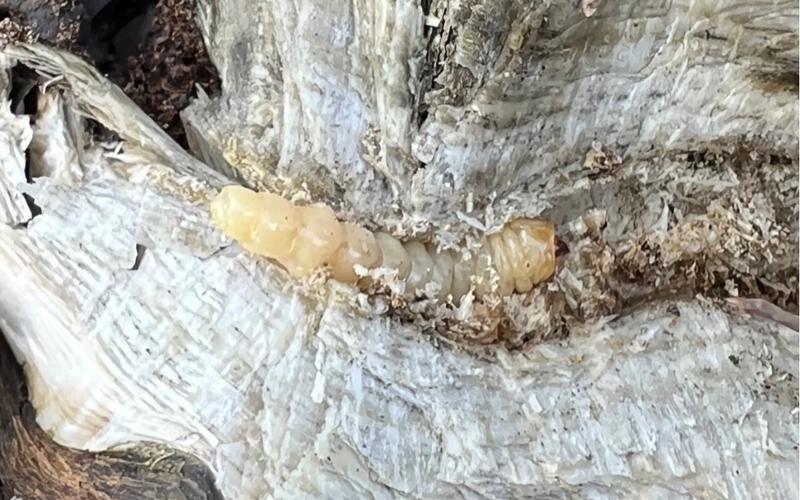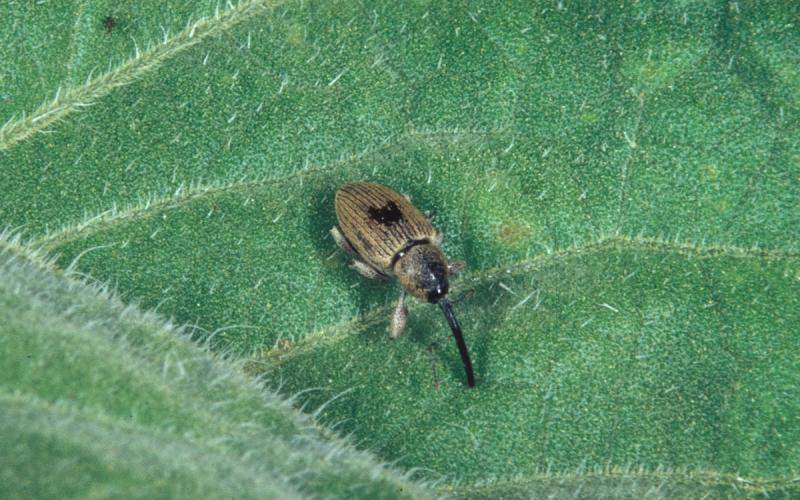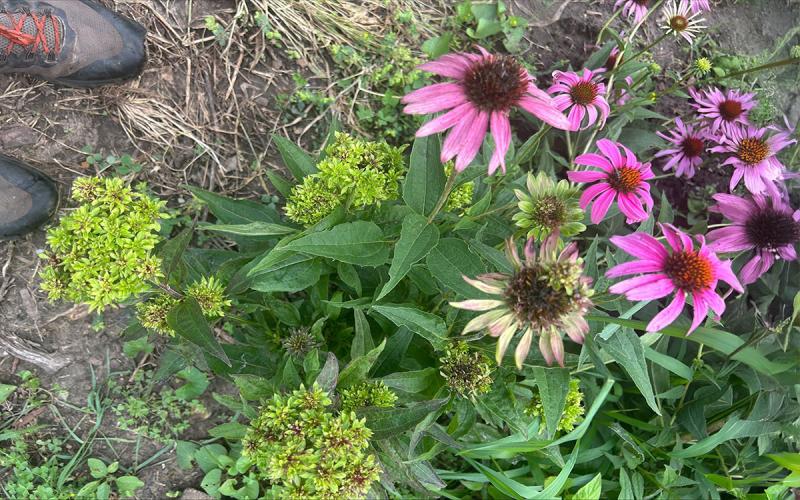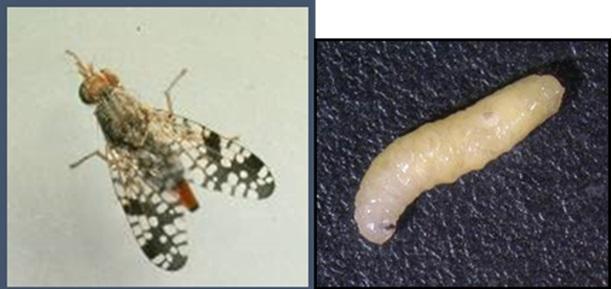
Written by Anitha Chirumamilla, former SDSU Extension Entomology Field Specialist.
A few days ago, I received a couple of calls about small orange/tan colored sacs sticking out of sunflower heads and small black spots on heads. The brown structures are sunflower seed maggot pupae and the damage described is caused by its larvae. Sunflower seed maggots (Neotephritis finalis, Order: Diptera) are tephritid flies, commonly known as picture winged flies. Adults are small (¼ inch), look very similar to houseflies but with a lace-like pattern on their wings.
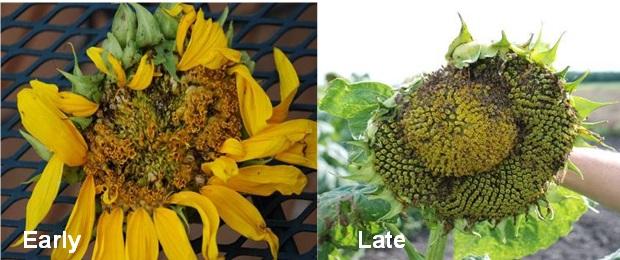
The seed maggot adults are seen flying all through summer as they have two generations in a year in South Dakota. First generation adults emerge through July and lay elongate white eggs on the bracts and corolla of partially opened sunflower buds. The larvae are white legless maggots, about 0.2 inch long when fully grown (Figure 1). Larvae feed on the florets and ovaries leaving a trail of frass as they tunnel into the head. A single larva is capable of feeding on 10-12 ovaries interfering with seed fertilization and development. Larvae are deeply buried in the spongy tissue of the receptacle, and at maturity form oblong shaped pupae that are tan or yellow in the beginning and later turn reddish brown.
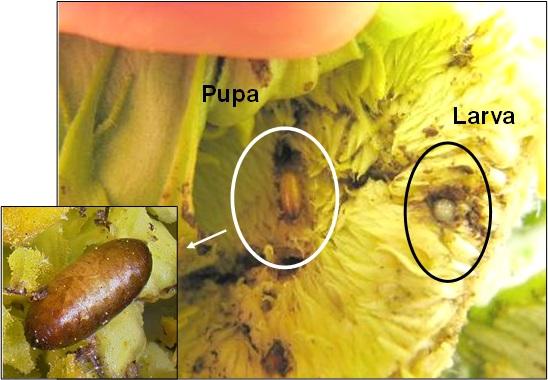
Due to this feeding in early bud stage, heads are deformed with holes and depressions are formed due to loss of seeds. Second generation adults are seen in August and the larvae feed on developing seeds.
Management:
Sunflower seed maggot is not a very serious pest of economic concern in Dakotas. However, previous reports state that it has the potential to cause serious damage during heavy infestation years. Studies conducted at North Dakota State University evaluating the timing of insecticide application and mode of action showed no effect of insecticides on seed maggot damage. The fact that the adults are highly mobile and the larvae are deeply seated in the receptacle of sunflower head makes it difficult for the insecticide to reach the target. However, late planting was shown to be an effective IPM strategy as sunflowers avoid the peak periods of fly emergence.
